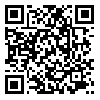Mon, Nov 17, 2025
[Archive]
Volume 9, Issue 4 (10-2019)
Iran J Ped Hematol Oncol 2019, 9(4): 271-275 |
Back to browse issues page
Download citation:
BibTeX | RIS | EndNote | Medlars | ProCite | Reference Manager | RefWorks
Send citation to:



BibTeX | RIS | EndNote | Medlars | ProCite | Reference Manager | RefWorks
Send citation to:
Fe Joibi K, Ibrahim S, Shafii N F, Mat Jusoh S A, Mustaffa R, Johan M F et al . Clinical and Laboratory Findings of Cup-Like Nuclei in Blasts with FLT3 Mutation in Pediatric Acute Myeloid Leukemia: A Case Report. Iran J Ped Hematol Oncol 2019; 9 (4) :271-275
URL: http://ijpho.ssu.ac.ir/article-1-462-en.html
URL: http://ijpho.ssu.ac.ir/article-1-462-en.html
Kimberly Fe Joibi 
 , Salfarina Ibrahim
, Salfarina Ibrahim 
 , Nor Fadhilah Shafii
, Nor Fadhilah Shafii 
 , Siti Asmaa Mat Jusoh
, Siti Asmaa Mat Jusoh 
 , Rapiaah Mustaffa
, Rapiaah Mustaffa 
 , Muhammad Farid Johan
, Muhammad Farid Johan 
 , Wan Zaidah Wan Abdullah *
, Wan Zaidah Wan Abdullah * 



 , Salfarina Ibrahim
, Salfarina Ibrahim 
 , Nor Fadhilah Shafii
, Nor Fadhilah Shafii 
 , Siti Asmaa Mat Jusoh
, Siti Asmaa Mat Jusoh 
 , Rapiaah Mustaffa
, Rapiaah Mustaffa 
 , Muhammad Farid Johan
, Muhammad Farid Johan 
 , Wan Zaidah Wan Abdullah *
, Wan Zaidah Wan Abdullah * 


Department of Hematology & Transfusion Medicine Unit, School of Medical Sciences, Universiti Sains Malaysia Health Campus, 16150 Kubang Kerian, Kelantan, Malaysia
Abstract: (2742 Views)
Biologically, Acute myeloid leukemia (AML) is highly heterogenous. AML with cup-like blast morphology variant has been reported to have important role in risk group stratification and treatment implications. In pediatric age group, this morphology and its clinical implication is rarely discussed. Although this morphology variant is not stated in World Health Organization (WHO) classification of Tumours of Haematopoietic and Lymphoid Tissues, it is associated with poor outcome from the association with other features. A 10- year old girl diagnosed to have AML with this morphology variant is reported in this study. Her laboratory features were hyperleucocytosis, high D-dimer, and blasts morphology of cup-like cells and few mimic the bilobed features of acute promyelocytic leukemia (APML). Further investigation showed clinical and laboratory features similar to what had been reported before in adults, including the presence of adverse marker of Fms-like tyrosine kinase 3 (FLT3) mutation. She was treated with chemotherapy, following which the bone marrow examination documented marrow in remission. Unfortunately, she succumbed to the disease complication from sepsis and marrow failure after few months of diagnosis. Haemato-morphologists might consider this unique morphological recognition and correlate it with other findings, including molecular testing for proper clinical evaluation. The blast feature and haematological findings could predict the clinical behaviour of this type of AML and guide the patient management. This morphological variant serves an important role especially if molecular testing is not available in some parts of the world or at the time of presentation when the result is still pending.
Type of Study: case report |
Subject:
General
Received: 2019/04/25 | Accepted: 2019/08/5 | Published: 2019/10/18
Received: 2019/04/25 | Accepted: 2019/08/5 | Published: 2019/10/18
Send email to the article author
| Rights and permissions | |
 |
This work is licensed under a Creative Commons Attribution-NonCommercial 4.0 International License. |


